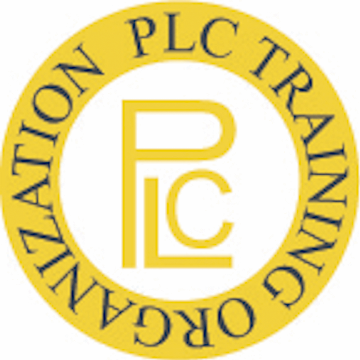Scholastic PLC Courses : PLC Training Best Practices

This is section 3 Scholastic PLC courses of the PLC Training Best Practices. The important take away here is there is a difference between PLC education and PLC training. Although most use the phrase "PLC Training" even when they are only delivering PLC education, not actual PLC training. Education is being taught theory and information and verifying short term memory with written test (Scholastic education). PLC Training in contrast is being trained to perform a task a certain way. (hopefully the best way, best practices.)
NFPA 79 2015; IEC 60204-1; IEC 61131-3:2013; ICS 21.020: 29 CFR 1910.212.
When you are ready to move on above and beyond Industry standards as a constant improvement program, learn and implement industry PLC programming conventions and industry naming conventions so your PLC programs are more familiar and understood by your customer. That is what the PLC training tip and best practices contained in these 10 sections address. This page is for Section 3 of these 10
PLC Training Tips:
- All occupations seeking PLC training should have at least the minimum electrical safety training.
- As PLCs are predominantly used in the process and manufacturing industries, it is best to take an industrial electrical course before learning PLCs.
- A PLC training video course is a good way to get the bulk of PLC scholastic knowledge to you. Especially if it comes with workbooks.
- Most troubleshooting that involves a PLC, also involves electrical, so it is a great idea to take the electrical troubleshooting course too, before moving on to PLC training.
- Equally so, getting familiar with the above standards is helpful too.
- Base your training decisions on past experience and current occupation you are seeking the PLC training for. An industrial IT person may not desire as heavy electrical training before learning PLC basics and programming. A maintenance person would want all they can get their hands on.
- Understand from the beginning learning PLCs is a journey, not just one quick course. Once you are caught up, technology and/or technique will have evolved requiring additional training or at least further education.
- When ever in panels, take some comparison and reference VOM readings and record. It will help you later when you have a transformer or power supply failure.
- More coming soon ...
Section 3: Scholastic PLC Courses:
The tips and best practices on this page will be helpful for ...
The maintenance manager, commercial electrician, industrial electrician, instrumentation tech, mechatronics tech, industrial engineer, industrial IT person industrial software programmer or the mechanic cross training and others.
Bookmark this page or site; as new best ways for PLC technician, industrial electrician, instrumentation technician and others to perform basics task are verified, they will be added here.
PLC Training Best Practices:
3.1 PLC Scholastic courses Topics:
Besides scholastic PLC topics in manuals, the best way, the safest way and the most reliable to perform task should also be taught
2.2 PLC Education Delivery
Inventory all PLCs in your facility
2.2.1 Working with PLCs Safely
2.2.2 Working with PLCs Reliably
2.3 PLC commissioning best practices
Introduction, configuration and troubleshooting PLC hardware,
Never use default node and IP address
Never leave a PLC force in place longer than 24 hours, follow safety protocol.
More coming soon ...
Next ... Section 4: PLC Troubleshooting Training Best Practices. To learn more best practices seek out this Instructor Based PLC training.

